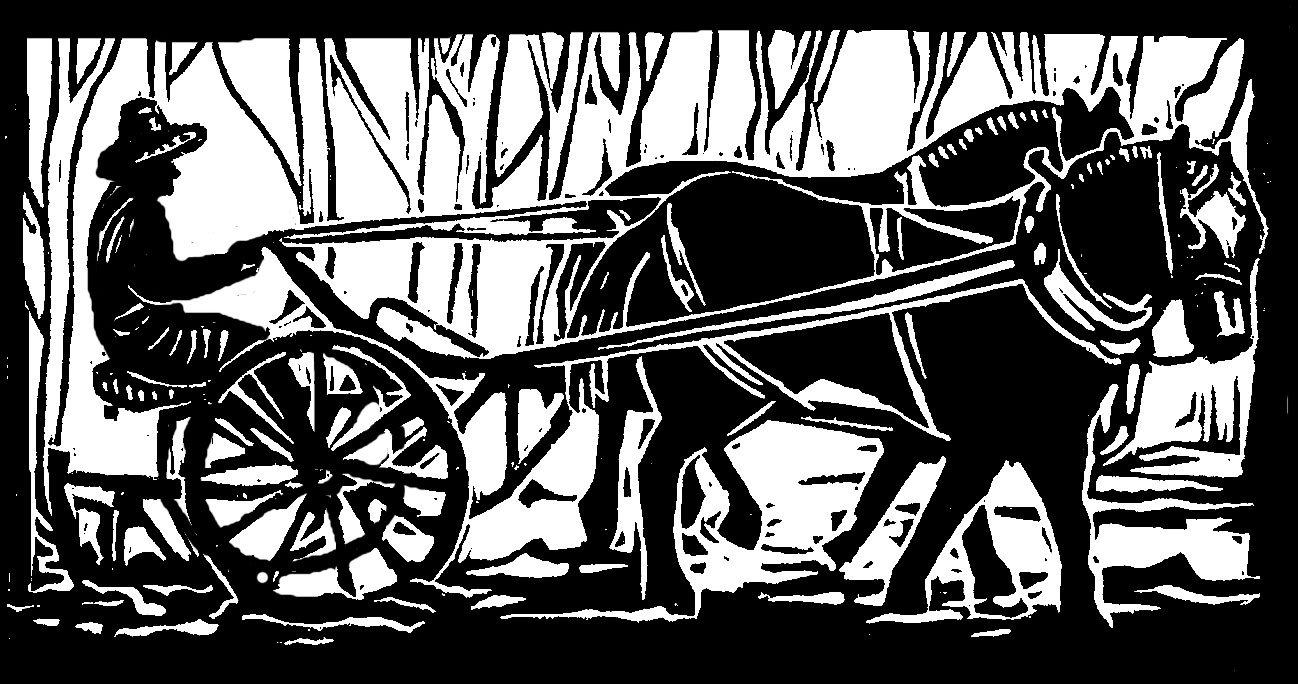Sometimes this writer-farmer takes a little break in the summer from writing about weeding to write about haying. Happily, thanks to a hot dry July, we already have all our hay in, and it is good hay, too. Only the very last load of the season got a tiny bit wet, just one small rain shower. After a marginal hay crop last year, and three horses pushing their noses through their daily doses of hay without enthusiasm, it is a relief to have a barn full of sweet-smelling hay.
It is not a relief, however, to come back to the weeding after the haying. The garden has gone completely amuck during our hay-hiatus. I begin to worry that, in fact, we are going to lose a crop entirely again to weeds this season, despite my recent claim that this hasn't happened in years.
I mean, heck, I can't even remember now what we planted under those towering weeds.
“Did we plant anything under these towering weeds?” I moan to my fellow farmer.
“Gee, I think so,” my fellow answers. “Leeks, right? And weren't you harvesting scallions out of there?”
Ah, yes. Now I remember, and one hay-free day, I dive in, and liberate the leeks. They still have a chance, valiant Welsh vegetables that they are. (I love leeks, my mother's family is Welsh, and the Welsh symbol is the leek. Therefore I start by weeding the lovely leeks. A person needs to bring some sensible order to her weeding.)
Next in the weeds is the Swiss chard. Chard is a nice big leafed sturdy vegetable, the Swiss are nice orderly people, and the chard has not been entirely overpowered either. I weed more quickly now, and then come to an abrupt halt.
Let's see, I did harvest a lot of scallions out of this section some time ago. But are there any still lingering, hanging on to life, or can I just rip out all these monstrous weeds? I rip, making relatively quick work of the weeds in the almost empty of scallions section, and we use the last few determined bunches for our lunch.
There is still a big chunk of the bed left to weed, probably 100 feet, and I peer into the weeds, hunting for food. Then it occurs to me: Oh no! The dill and cilantro!
Luckily, my fellow farmer isn't nearby to hear my muttering and cursing, because this dill and cilantro planting was a mistake in the first place.
Years ago, I announced: “No more big plantings of dill and cilantro! We can't keep it weeded! We're only going to plant a tiny bit in the herb garden from now on!”
“All right!” announced my fellow farmer back.
This is what happened too, for several seasons, until I was once again swayed by my optimistic fellow farmer, and by a big empty space in a bed, that needed something planted in it, quickly, before the weeds came on. I had foolishly forgotten my dill and cilantro vow, after so many peaceful herb years.
“How about dill and cilantro?” my fellow farmer said, also clearly forgetting my vow, or, perhaps, happily bypassing it.
“Isn't that too much?” I said, a faint bell ringing in my head.
“Nah,” said my fellow, “Everybody loves dill and cilantro.” He got the seed packets out of the storage tub.
“We're going to keep it weeded?” Bells rang more loudly.
“Of course,” he said, dumping the seeds in the seeder.
“We're going to harvest it on time? Before it bolts?”
“Of course!” he repeated, as he barreled down the empty stretch of bed with the seeder, planting dill and cilantro. A lot of it.
“I don't know if this is a good idea,” I called after him.
“It's a great idea!” said he, man of action and enthusiasm.
And so it goes.
And so I sat, glumly contemplating the huge weeds, and the supposed dill and cilantro planting. I don't even like dill all that much, I thought. And cilantro's pretty darn good in salsa, but some people are allergic, and think cilantro tastes like soap. Why are we planting this much soap?
Then my herb vow came back fully and clearly to mind, all bells clamoring. I also had a sudden understanding of my farmer-daughter's sighs and groans when sent to harvest dill and cilantro, as well as an increasing understanding of her paltry harvest.
Then and there, I made a new farming vow, or at least a new weeding vow: to write all my brilliant vows down, and announce them, at top volume, every morning, all season long. Now that sounds like a fine start to a farming day!
Originally published in the Monadnock Shopper News, Aug 28- Sept 3, 2019
